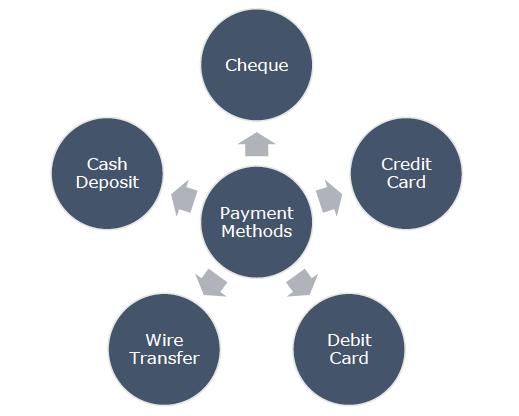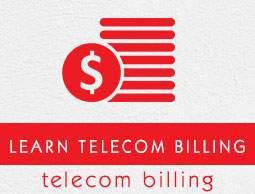Telecom Billing - Payment Processing
Once the invoices are sent to the customers, the customers start making payments of their bills. The processing of bill payments into the billing system is called payment processing.
The payments made by the customers are posted to the customers' account. If there are any outstanding invoices, then which invoice is paid depends on the account's accounting method. There are two types of accounting methods −
Balance forward accounting − Using this method, if a number of invoices are outstanding, payments received are allocated to invoices according to the age of the receivable, with the oldest invoice being created first.
Open item accounting − This method allows payments to be allocated to specific invoices. Open item accounting is particularly useful when dealing with payments from the business customers.
Payment Methods
A customer can make payment using different payment methods that are supported by the service provider; for example, the customer can make payments using the payment methods such as cheque, credit card, debit card or wire transfers, or direct cash deposit.

An operator may have multiple bank accounts into which it will receive payment done through bank accounts directly. These bank accounts are referred to as holding accounts and sends payment details to the billing system in text files.
If payments are received outside the billing system either manually or electronically, then those payments are uploaded into the system using automated process to settle down the invoices.
Automatic Payments
Billing Systems provide facility to capture credit card or debit card information and automatic payment methods on monthly basis.
If payment method is set automatic using either credit card or debit card, payment requests are generated automatically after every invoice or on a given date and these requests are sent to the payment gateways (or banks) for payment authorization.
Once all the payments are authorized, they are uploaded into the billing system to settle down the due invoices.
Manual Payments
If the payments are made using cash or cheque, then either it can be entered into the system upfront the customer or if this is collected by some agencies, then all such payments are collected and posted to the billing system using automated methods provided by the billing system.
For all the payments received, payment files are prepared with a predefined format and then they are pushed automatically to a predefined location from where Billing System picks them up and uploads into the billing database.
There may be a situation, when a payment made by credit card or cheque does not go through. If this payment is already posted into the system, then it needs a cancellation to adjust the amount. Billing System provides utilities to handle failed or cancelled payments.
Payment Interfaces
An interface is a bound between the billing system and any other external system to receive the payment. Interface allows two systems to communicate with other based on predefined rules.
For example, a simple text file could be a payment interface between a bank and the billing system. If interface is file based, banks keep sending payment details using payment files in predefined format.
There could be an online API-based interface between a bank and the billing system. If an online interface is in place, then bank will call the provided API to post the payment directly into the billing system.
Similar way, there could be file-based or online interfaces provided for third party involved in collecting payments.
What is Next?
So far, we have almost gone through the complete life cycle of a telecom customer. The next chapter is important to understand the dispute situation that arises between operators and customers.



